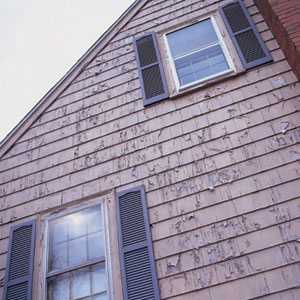Peeling paint inside or outside of your home starts as just an eyesore but if it’s left unattended it will quickly cause a high repair bill for the homeowner. Once the paint on the house begins to peel, moisture will infiltrate the unpainted areas and will accelerate the decay of the wood, which will eventually lead to rotten wood. Once peeling paint is detected on your home, you should take the necessary steps to correct it before it worsens.
Most Common Reasons that Paint Peels…
- Inadequate prep work prior to painting.Proper prep work includes cleaning, scraping of all loose or flaking paint, priming any bare or exposed wood using a quality oil based exterior primer and caulking all joints, cracks or any other areas where moisture could penetrate.
- Using an incompatible paint to paint your home. There are two main types of paint, latex and oil. While oil paint is rarely used on the exterior these days, there are still many houses that have an oil based paint on their exterior. If latex paint is put over an oil paint, it will quickly lead to paint peeling because it will lack the right amount of paint adhesion. If you have an oil based paint on the exterior of your house and want to use a latex paint to re-paint your home, then the house must be primed with the correct type of primer first.
- Using inferior paint. Just because one gallon of paint is ten or fifteen dollars cheaper than another does not always mean that you are getting a great value. All paint is not created equal.
- Having too many coats of paint on your home. As the thickness of the paint builds up, the paint looses its flexibility and as a result becomes rigid and unable to expand and contract with the surface of the house, which leads to peeling.
While many homeowners will experience some type of paint peeling, the best thing to do is to correct the problem at the first sign of trouble.
Wolff Painting and Wallpapering has been painting homes since 1981.

